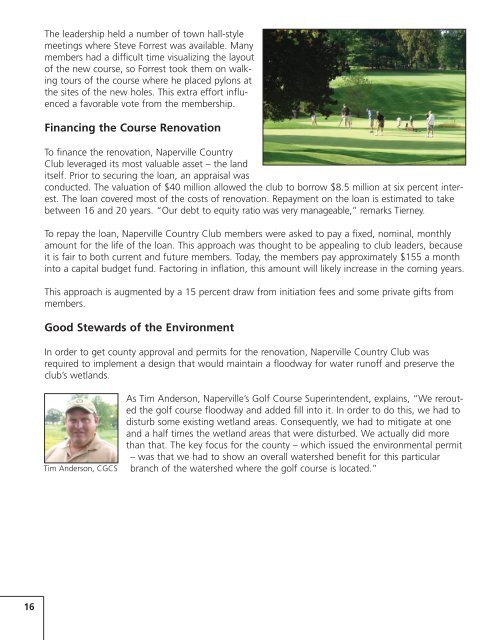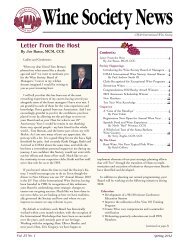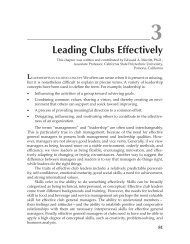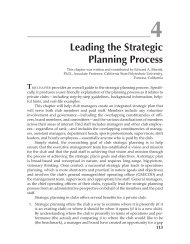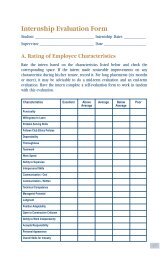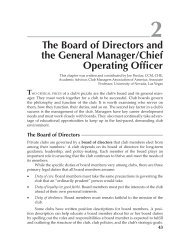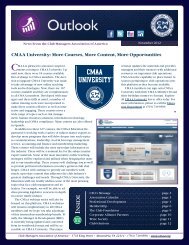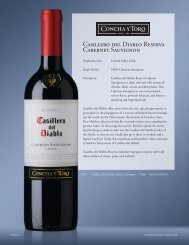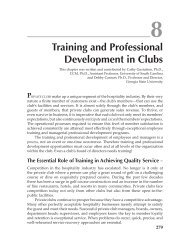case study: naperville country club - CMAA
case study: naperville country club - CMAA
case study: naperville country club - CMAA
You also want an ePaper? Increase the reach of your titles
YUMPU automatically turns print PDFs into web optimized ePapers that Google loves.
The leadership held a number of town hall-stylemeetings where Steve Forrest was available. Manymembers had a difficult time visualizing the layoutof the new course, so Forrest took them on walkingtours of the course where he placed pylons atthe sites of the new holes. This extra effort influenceda favorable vote from the membership.Financing the Course RenovationTo finance the renovation, Naperville CountryClub leveraged its most valuable asset – the landitself. Prior to securing the loan, an appraisal wasconducted. The valuation of $40 million allowed the <strong>club</strong> to borrow $8.5 million at six percent interest.The loan covered most of the costs of renovation. Repayment on the loan is estimated to takebetween 16 and 20 years. “Our debt to equity ratio was very manageable,” remarks Tierney.To repay the loan, Naperville Country Club members were asked to pay a fixed, nominal, monthlyamount for the life of the loan. This approach was thought to be appealing to <strong>club</strong> leaders, becauseit is fair to both current and future members. Today, the members pay approximately $155 a monthinto a capital budget fund. Factoring in inflation, this amount will likely increase in the coming years.This approach is augmented by a 15 percent draw from initiation fees and some private gifts frommembers.Good Stewards of the EnvironmentIn order to get county approval and permits for the renovation, Naperville Country Club wasrequired to implement a design that would maintain a floodway for water runoff and preserve the<strong>club</strong>’s wetlands.Tim Anderson, CGCSAs Tim Anderson, Naperville’s Golf Course Superintendent, explains, “We reroutedthe golf course floodway and added fill into it. In order to do this, we had todisturb some existing wetland areas. Consequently, we had to mitigate at oneand a half times the wetland areas that were disturbed. We actually did morethan that. The key focus for the county – which issued the environmental permit– was that we had to show an overall watershed benefit for this particularbranch of the watershed where the golf course is located.”16


